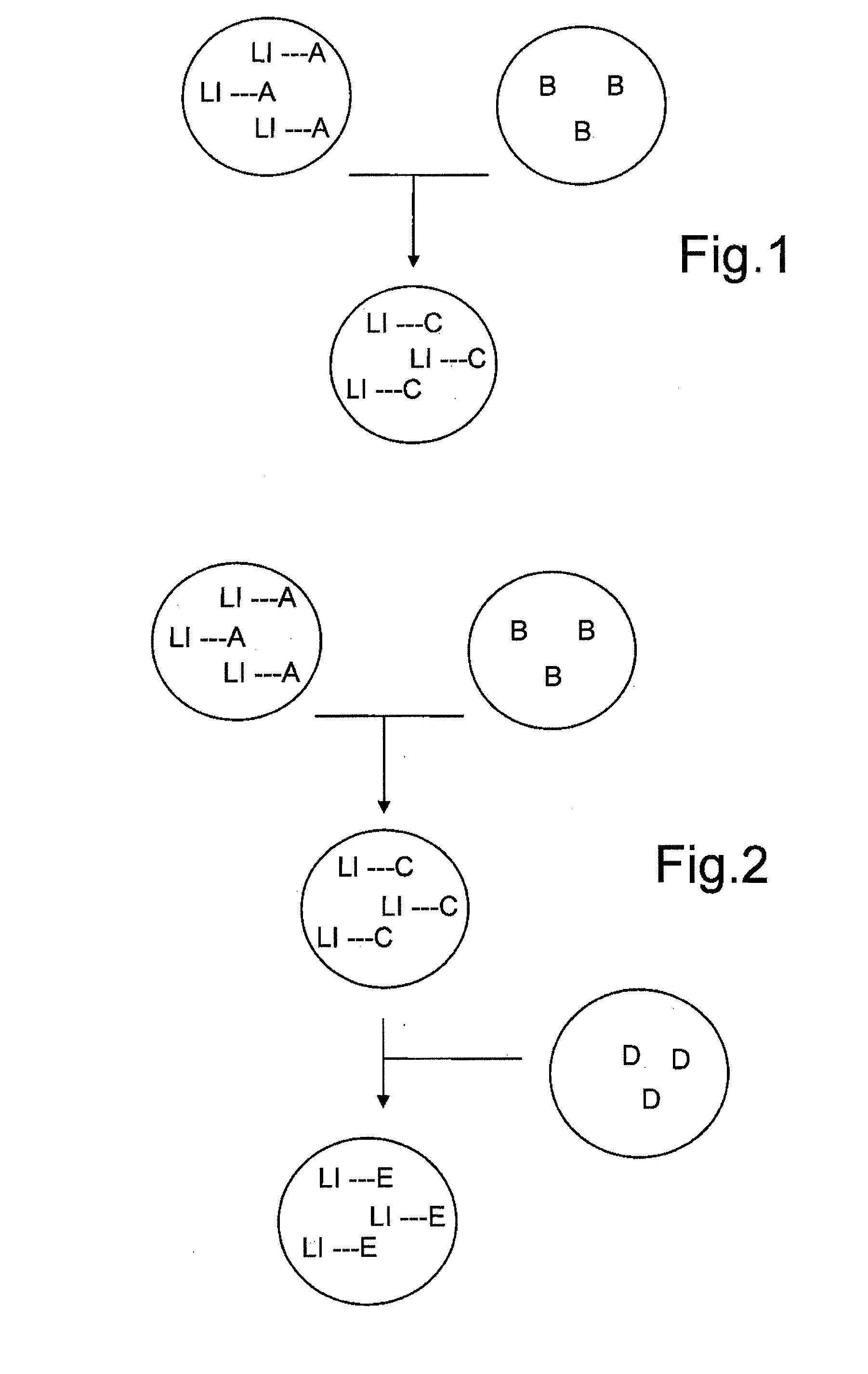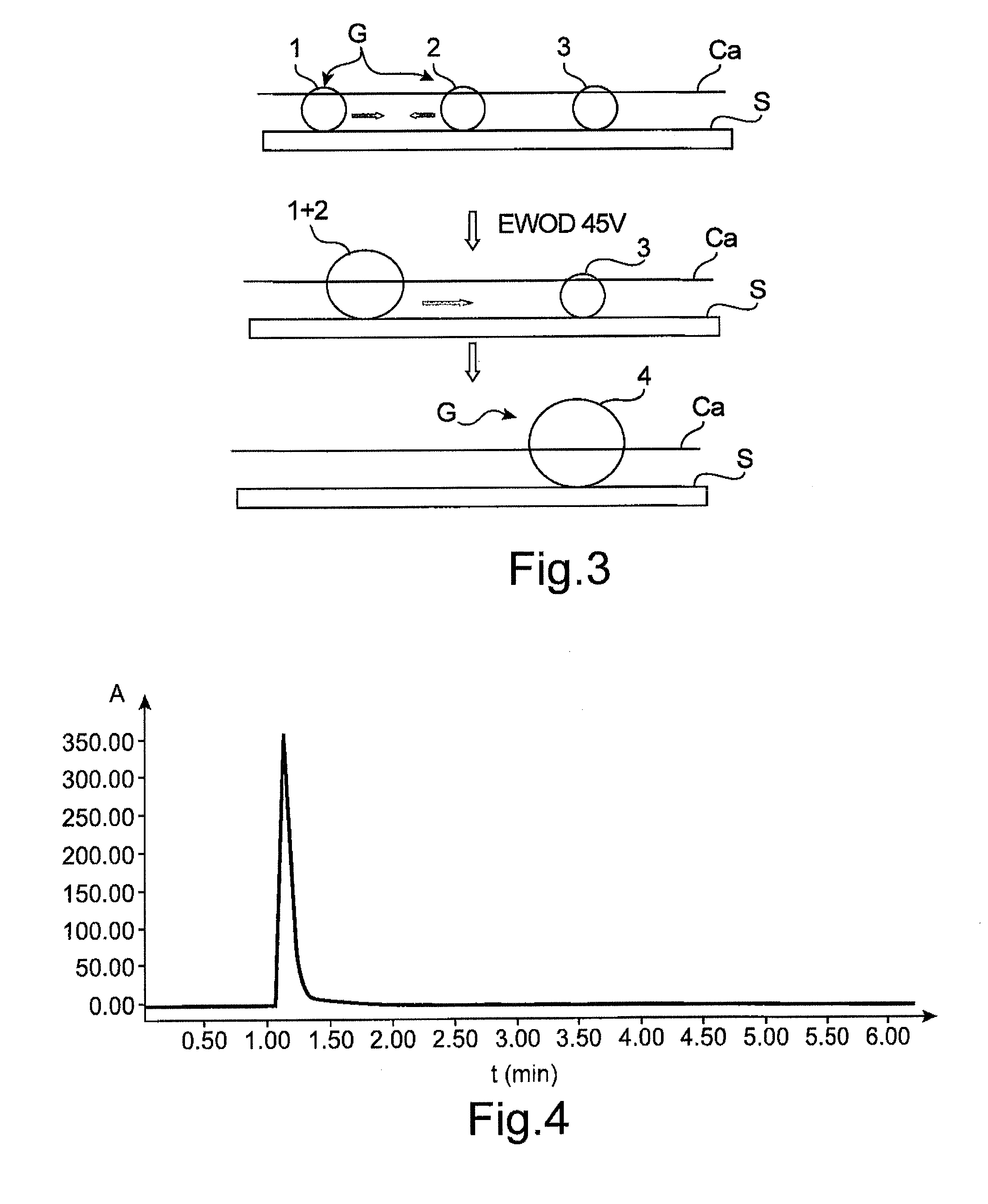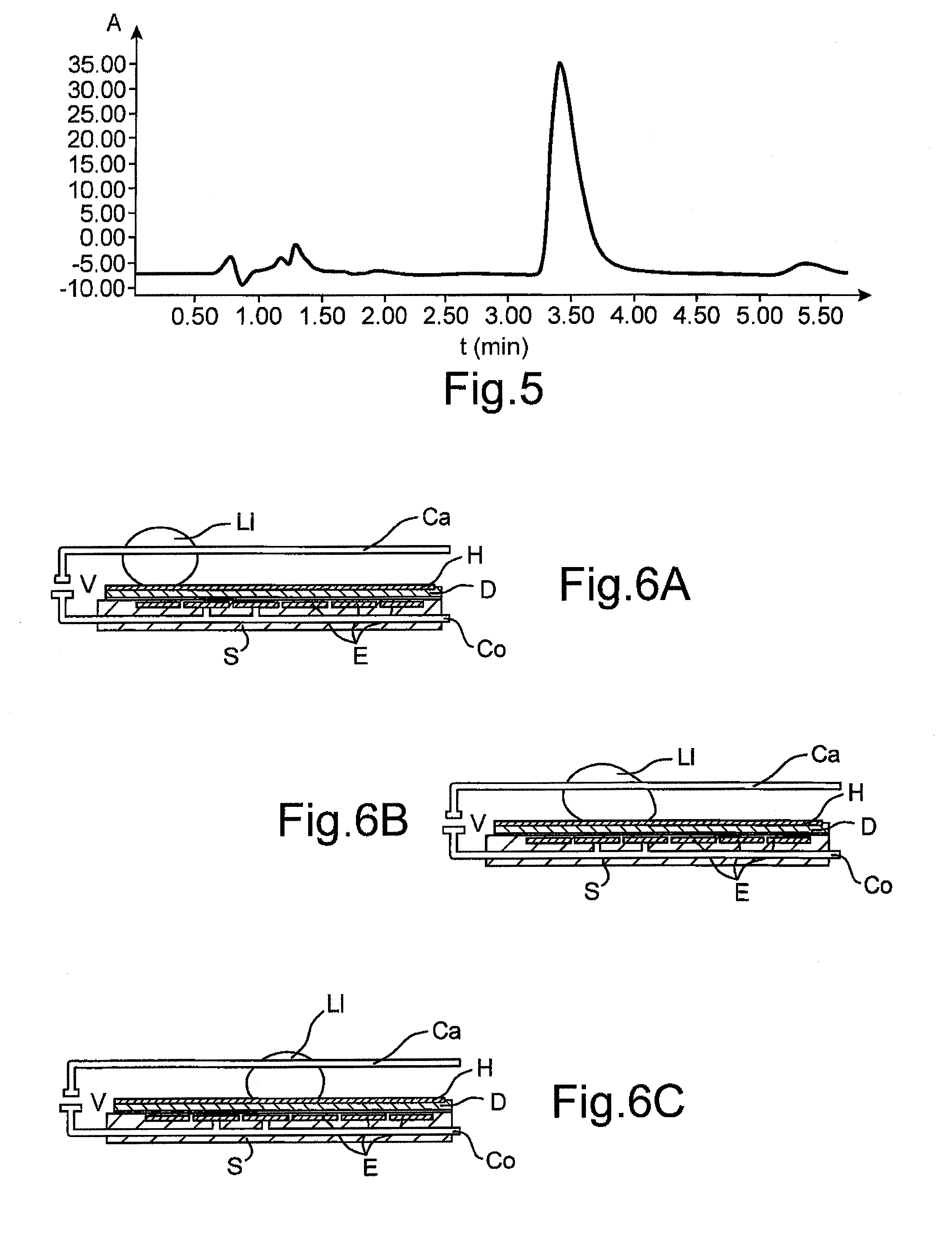Droplet microreactor
a microreactor and droplet technology, applied in the field of droplet microreactors, can solve the problems of user toxicity, difficult to prevent dead volumes, and make them impossible to use, and achieve the effect of convenient purification and inexpensive fabrication
- Summary
- Abstract
- Description
- Claims
- Application Information
AI Technical Summary
Benefits of technology
Problems solved by technology
Method used
Image
Examples
example 1
Implementation of the Method of the Present Invention with Displacement of the Droplets so as to Carry Out a Series of Several Chemical Reactions: In the Case of the Grieco Reaction
[0167]Three droplets of ionic liquids, each having a volume of 0.5 μl, are deposited onto a Teflon-coated surface of the reaction chamber described in document [16] and represented schematically in the attached FIGS. 3 and 6.
[0168]The droplets used in this example have the following composition:[0169]droplet 1: droplet of 4-aminobenzoic acid supported on ammonium salt 1 (see reaction scheme below) in a 1 M solution in [tmba][NTf2];[0170]droplet 2: droplet of 2 equivalents of 4-nitrobenzaldehyde and 1.2 equivalents of TFA in a 0.5 M solution in [tmba][NTfz]; and[0171]droplet 3: droplet of 10 equivalents of indene in a 1 M solution in [tmba][NTfz].
[0172]The droplet displacement technique used in this example is an electrowetting displacement technique which operates as represented schematically in FIG. 6 (a...
example 2
Detritylation Reaction Carried Out According to the Method of the Present Invention
[0194]Two droplets of matrix ionic liquid ([btma][NTf2]), each of 0.5 μl, are deposited on the Teflon-coated surface of the reaction chamber described in document [16].
[0195]Each of the droplets contains a reagent: droplet No. 1 contains a tritylated thymidine base and droplet No. 2 contains dichloroacetic acid.
[0196]Droplet No. 1 is made to converge towards the other droplet using the electrowetting technique. The voltage applied is 45 V.
[0197]After fusion of the two droplets, the mixture is incubated at ambient temperature for 5 minutes. An orangey coloration of the droplet demonstrates the formation of the desired product.
[0198]The chemical reaction carried out is the following:
[0199]In which DCA is dichloroacetic acid and EWOD represents the displacement by electrowetting.
example 3
Implementation of an Enzymatic Reaction
[0200]A first reaction mixture is prepared as follows: 50 mM citrate-phosphate buffer, pH 6.5 (10 ml), o-phenylene-diamine (OPD, 20 mg) and aqueous hydrogen peroxide (4 μl).
[0201]A droplet of this mixture, 0.5 μl in volume, is dissolved in matrix ionic liquid ([btma][NTf2]) (0.5 μl).
[0202]A second reaction mixture is prepared as follows: matrix ionic liquid ([btma][NTf2]) (0.9 μl) and horseradish peroxidase (0.1 μl at 20 μm).
[0203]A droplet (0.5 μl) of each of the mixtures is deposited onto the Teflon-coated surface of the reaction chamber used in Examples 1 and 2 above.
[0204]Droplet No. 2 is made to converge towards the other droplet using the electrowetting technique. The voltage applied is 45 V.
[0205]After fusion of the two droplets, the mixture is incubated at ambient temperature for 20 minutes.
[0206]A brown coloration characteristic of the enzymatic reaction for forming 2,3-diaminophenazine is observed.
Example 4
Implementation of the Method...
PUM
| Property | Measurement | Unit |
|---|---|---|
| volume | aaaaa | aaaaa |
| volume | aaaaa | aaaaa |
| temperature | aaaaa | aaaaa |
Abstract
Description
Claims
Application Information
 Login to view more
Login to view more - R&D Engineer
- R&D Manager
- IP Professional
- Industry Leading Data Capabilities
- Powerful AI technology
- Patent DNA Extraction
Browse by: Latest US Patents, China's latest patents, Technical Efficacy Thesaurus, Application Domain, Technology Topic.
© 2024 PatSnap. All rights reserved.Legal|Privacy policy|Modern Slavery Act Transparency Statement|Sitemap



